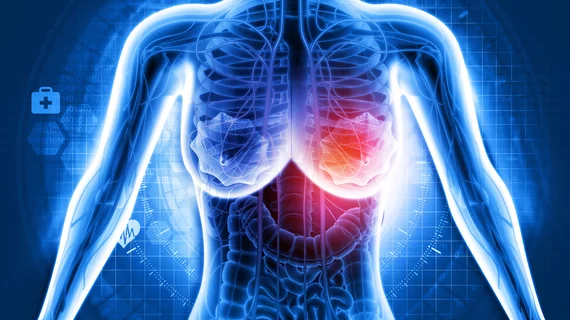Quality improvements reduce biopsy wait times for patients with suspicious breast MRIs
Quality improvement initiatives can reduce the number of visits and the time to biopsy for patients who have suspicious findings on their breast MRIs, according to the results of a new study.
After the University of Michigan Health System saw the volume of its breast MRIs and MRI-guided breast biopsies nearly double over a four year period, experts at the system noticed their patients were experiencing increased delays in receiving their diagnoses.
“The time to biopsy after the initial diagnostic breast MRI averaged several weeks, which was excessively lengthy for patients at high risk of developing breast cancer, with a new breast cancer diagnosis or who traveled long distances to obtain care at our tertiary care center,” corresponding author Akshat C. Pujara, MD, with the Department of Radiology at the University of Michigan Health System, and co-authors explained.
Without drastically disrupting the MRI schedule, doctors sought to develop a quality improvement initiative that would decrease patients’ required visits down to two instead of three while also performing biopsies within two weeks of identifying suspicious findings.
After analyzing their protocols, the team identified two potential areas that could be improved: the use of MRI-directed ultrasound when a sonographic correlate was not likely to be identified and a lack of same day MRI-directed ultrasounds and image-guided biopsies.
One part of the initiative included sending patients with non-mass enhancement and foci directly to MRI-guided biopsy. They also consulted MRI leadership, radiologists and schedulers to help create an algorithm that would recommend MRI-directed ultrasound for masses compared to non-mass enhancement and foci. The second aspect of the initiative included creating a schedule that would accommodate patients who needed to be prioritized for same day imaging and procedures.
In addition to observing a significant reduction in patients' time to biopsy, these changes also increased the number of patients requiring two visits (instead of three) from 31% up to 61%.
The doctors noted that although their study had limitations, they believe their techniques and teamwork could be applied to a variety of settings to improve workflows and minimize delays for patients.
You can view the detailed research in the Journal of the American College of Radiology.

